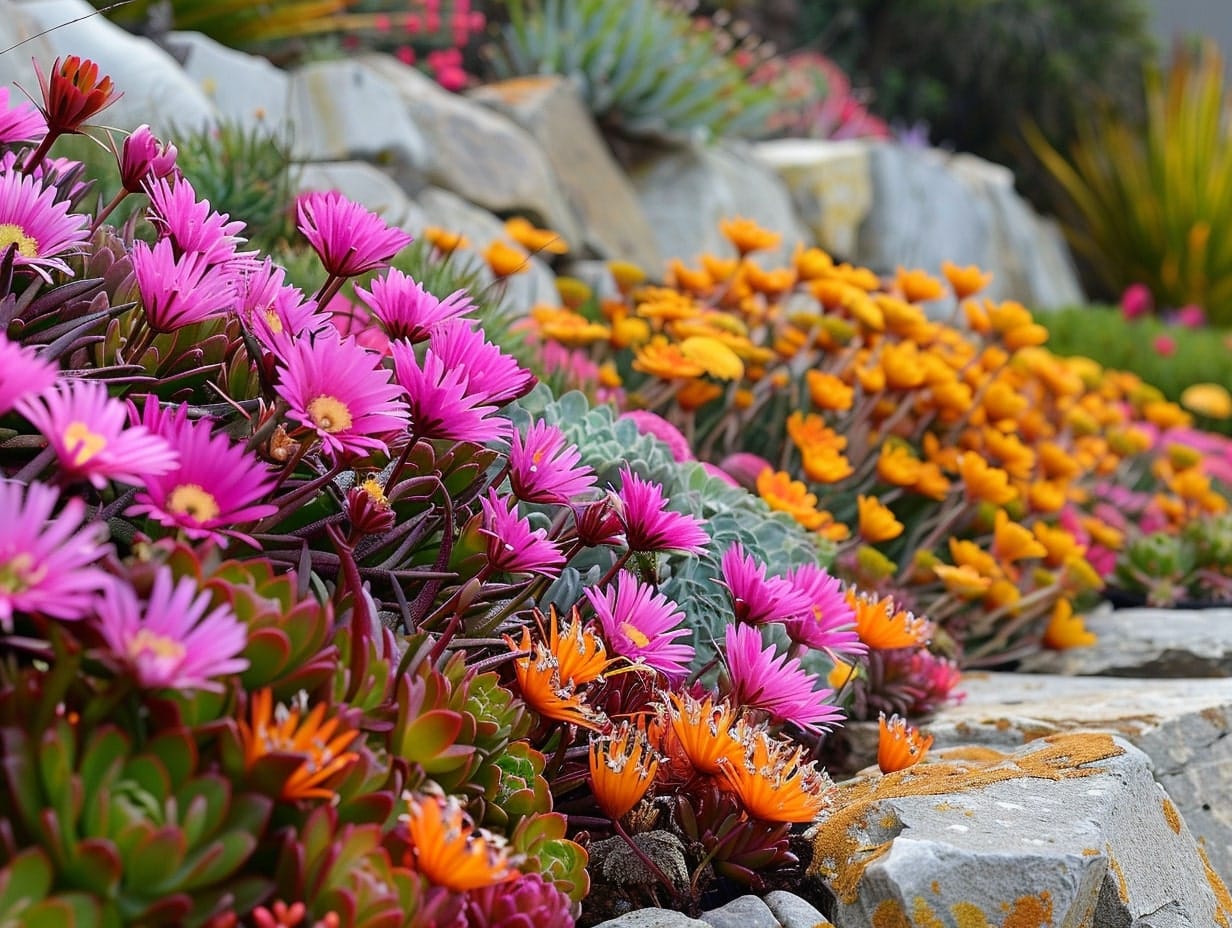When you buy products via links on our website, we might receive an affiliate commission. Learn more
Sun-Loving Wonder: the Midday Ice Plant!

In the diverse world of flora, certain plants not only captivate with their beauty but also intrigue with their unique behaviors.
The Ice Plant, scientifically known as Delosperma cooperi, is one such botanical wonder.
Renowned for its vibrant, daisy-like flowers and succulent leaves, the Ice Plant is especially noted for its distinctive flowering pattern—blooming profusely under the intense midday sun.
Overview of the Ice Plant

Origin and Habitat: The Ice Plant is native to South Africa but has become popular in gardens worldwide, especially in regions that mimic its native arid conditions. It thrives in full sunlight and is often used as ground cover in rock gardens, borders, and containers.
Physical Description: This perennial succulent forms a dense carpet of fleshy, green leaves, which help the plant conserve moisture. The leaves are sometimes covered with tiny glistening bubbles that look like frost, hence the name "Ice Plant." The flowers range from vibrant purple to pink and have a unique shimmering quality.
Blooming Behavior
Unlike many plants that open their flowers in the early morning, the Ice Plant waits until the sun is high in the sky.
This timing ensures that its blooms are open during the hottest part of the day, a period when many other plants have wilted or closed their blossoms to conserve water.
Adaptations for Midday Blooming:
- Thick, Succulent Leaves: These store water, allowing the plant to remain hydrated and keep its flowers open under the drying conditions of the midday sun.
- Reflective Flowers: The glossy surface of the flowers reflects sunlight, helping to attract pollinators that are active during these warmer hours.
Ecological Role

The Ice Plant plays a critical role in its ecosystem by providing nectar and pollen to insects during midday when resources can be scarce.
Its primary pollinators include bees and butterflies, which are most active under sunny conditions.
By blooming at midday, the Ice Plant helps ensure that these pollinators have a continuous food source throughout the day.
Cultivation Tips
Growing Conditions:
- Sunlight: Full sun is essential for optimal growth and flowering.
- Soil: Well-draining soil is crucial; sandy or rocky substrates are ideal.
- Water: Drought-tolerant once established, but regular watering is necessary during the growing season to keep the plant healthy.
Planting and Care:
- Planting Time: Spring or early summer, to give the plant time to establish before the colder months.
- Maintenance: Minimal; trimming back spent flowers can encourage further blooming.
- Pests and Diseases: Generally pest-free; however, overwatering can lead to root rot.
Landscaping with the Ice Plant

The Ice Plant is an excellent choice for xeriscapes and low-water garden designs due to its drought tolerance and low maintenance requirements.
Its vibrant blooms and ground-covering nature make it an attractive option for:
- Rock Gardens: Helps stabilize soils and adds color.
- Coastal Areas: Tolerant of salt and sandy soils.
- Green Roofs: Its low-growing habit and resilience make it suitable for rooftop gardens.
Conclusion
The Ice Plant is more than just an ornamental species; it's a testament to nature's adaptability.
Its ability to flower precisely when the sun's rays are most fierce speaks to a remarkable evolutionary strategy that aligns with the activities of its pollinators.
For gardeners looking to add a splash of color and interest to their landscapes, particularly in challenging dry climates, the Ice Plant offers an ideal solution.
Not only does it bring beauty and resilience to gardens, but it also supports local wildlife, fulfilling an important niche in the garden ecosystem.
By choosing the Ice Plant, gardeners can enjoy both the aesthetic and ecological benefits this stunning species has to offer.
